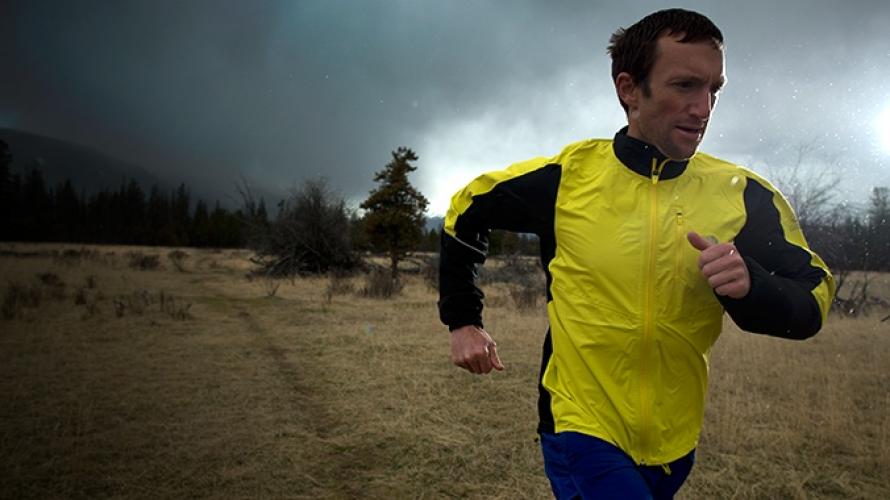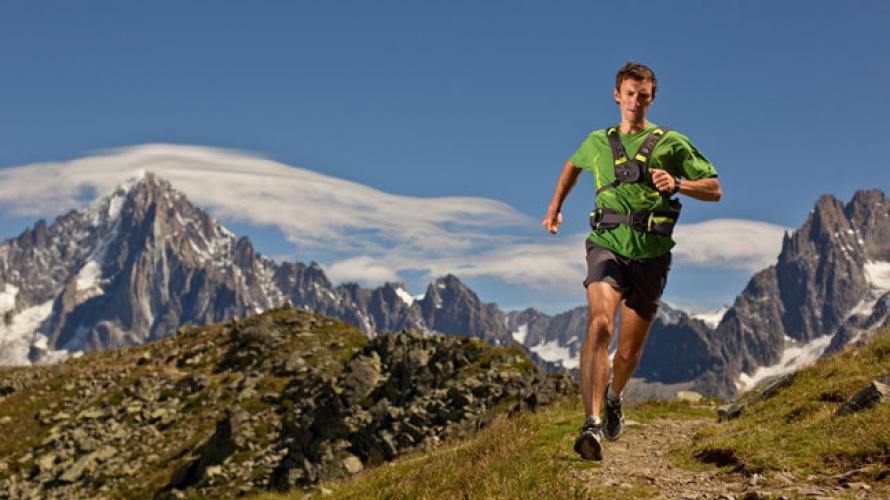


Brian D'Ambrosio is a writer/editor living in Missoula, Montana. D'Ambrosio is the author of more than 300 articles and five books related to Montana history, people, and travel.
*****************
Mike Wolfe is accustomed to hitting the trails.
Introduced to ultra-running by a pair of neighbors, his career began on the foothills around his hometown of Bozeman. He ran a 20-mile trail race, without any running shoes, at age 18.
At age 27, Wolfe began dashing over rough terrain again. By then, he had graduated from The College of Idaho with a political science degree and was preparing to enter law school at the University of Montana.
In 2010, Wolfe started work at the U.S. attorney’s office in Helena while competing on The North Face team. By 2011, UltraRunner magazine picked Wolfe second in its “Runners of the Year” award, and he earned a record-time win in the North Face Endurance Challenge 50 Mile.
Juggling multiple daily training runs and a law career seemed incompatible. Wolfe felt time fading away. He enjoyed practicing law, but figured he’d be even better at something far more rousing. He did not feel as accomplished or in control of his fate as he had wished. He felt as if he needed to add new dimensions to his sense of self.
Wolfe’s personal revolution nudged him to leave his job at the U.S. attorney’s office, move to Missoula, and fully dedicate himself to his running career.
Wolfe visualized his success along with the specific obstacles he would face. Dreaming big is fun, but Wolfe was shrewd enough to set realistic expectations that prepared him better for the challenges ahead. He built his stamina incrementally, took his risks selectively.
The lifestyle change required round-the-clock mental adjustments; the successful ultra-runner’s existence commands nonstop preparation. Ultra-running is an extreme expenditure in balance, pain, time, temperature, limb positioning, and the ability to register hunger and thirst.
Prime of Career
Right now, Mike Wolfe is in the prime of his career.
“The goal or hope I had from the start, I wanted to go all out in endurance,” says Wolfe. “I thought it was best for me to quit my job and focus on this for a bit. It’s an awfully short window. It’s hard to say how long I can run for. Honestly, a lot depends on injuries and just being smart about taking the time to rest and recover. There are some guys that are in their early 40s competing, guys who are really smart about training and racing.”
Since ultra-running is a new sport it comes with the steepest of learning curves. Wolfe has perfected his training regimen and benefits greatly from his collective wisdom.
“The biggest thing I’ve learned is how to give myself more rest periods throughout the year,” says Wolfe. “I’m focusing more on high-intensity quality than quantity. It’s about choosing workouts more wisely. To race well at an elite level, you need mental strength, focus, and composure. It’s probably sixty percent mental, forty physical.
When it comes to ultra-running, all the intricate zigzagging through rock, water, space and wilderness pales in comparison to the mechanics in your head.
“People ask a lot about the mental part,” says Wolfe. “There are those days when you run five miles and get bored or just want to turn your headphones on. But I’ve figured out how to turn the switch on and off. You have to be comfortable within your head space. You have to find a spot where you are comfortable. But, even still, long races get painful after a while.”
Wolfe’ s motivations have shifted throughout the years. Early on, he sought pure adventure and set out to prove to himself that he could cross the finish line.
“It was more about the adventure of running in the mountains and pushing myself,” says Wolfe.
While he is still rooted in the drive and desire of exciting activity, he is now more goal-oriented than ever.
“I want to do well in these races,” says Wolfe. “There is a desire to see if I can go to the next level, competing against the best in the world. I care about how I size up against the other guys. Ultimately, I want to see what I’m capable of.”
Yet, Wolfe is quick to admit that some of his proudest moments have been those when he barely mustered the fortitude to finish. “You learn more from those finishes, the ones you struggle to stay upright, coming in hours behind the top finisher, than anything else.”
John Muir Trail Record
It seems to be human nature to aim high and fall short. Not Wolfe. He aims high and hits the target. Wolfe started modestly and worked up to bigger challenges.
This past summer, he and a friend set a new speed record for a supported run on the John Muir Trail (JMT).
On August 1-4, 2013, Wolfe and Hal Koerner, 37, from Ashland, Oregon, covered the 223 miles from Whitney Portal in Bishop, California, to Happy Isles in Yosemite in 3 days, 12 hours and 41 minutes.
Digging deep from the gutsiest model of self-determination, the men ebbed and flowed with instinctive grit.
“Hal and I chatted on and off on day one, but I think we also settled quite quickly into the functional mode that made our partnership so strong and saw us through to the end. We swapped leads naturally, whenever one would stop for a bathroom break, water refill, or photo. But, other than that, we moved very fluidly, with the lead person often twenty or thirty yards ahead of the other. No talking, just movement.”
Marked by long expanses of rock and exposed heat, the trail’s rigors are many. With the exclusion of about 10 miles, the JMT rarely drops below 8,000 feet. There are six mountain passes, each higher than 11,000-feet, and a total of 84,000 feet of elevation change. Every whiff and noise forged a tight connection between runner and environment.
The pair slept a total of approximately five hours in three nights and spent their down time perusing a 10-page John Muir Trail map. Each page served as a milestone, the next destination.
Similar to a submarine, Wolfe scooted through the depths, probing the mountains and valleys, exploring inhospitable realms. Venturing into treacherous places dulled his perception.
“Serious sleep deprivation leaves your memory foggy. I remember certain sections, certain moments with vivid clarity. Surely instances burned into my memory that I’ll never forget. Then, other sections of our run are a blur, where I can’t even remember running entire sections of trail when I look back over the maps.”
Next Level
Wolfe’s mode of living is simple: procrastinate less and tackle challenges enthusiastically. Ultra-running provides him with a sense of competence and autonomy, as well as the impression that he can freely choose his own life itinerary.
At 35, the next level is increased competition and bigger races against uppermost athletes.
“There are a handful of marque races for the sport,” says Wolfe. “I’d like to face the top athletes, and show up against the top athletes. There are some races in Europe I’d like to compete at – technical mountain courses.”
In Europe, ultra-running is a far more visible sport. But the trajectory of its popularity at home is undoubtedly rising, he says.
“Certainly the sport is on a huge upward curve across the board. It’s gotten huge in the last five, six years in the United States. There have been many one-hundred mile races in the last five, six years. Today, there are more sponsorships, more opportunities. It’s becoming a legitimate sport now. I’ll probably be an old has-been by the time it’s really grown.”
Mike Wolfe’s conditioning grounds are the slanted inclines and vertical mountains surrounding his Missoula home. Along these rises and slopes, he nurtures his self-discipline and incorporates the landscape in the most physically productive fashion.
“It’s certainly advantageous to be an ultra-runner who lives in the West. I’m out running in the hills all of the time. I enjoy it.”
~

